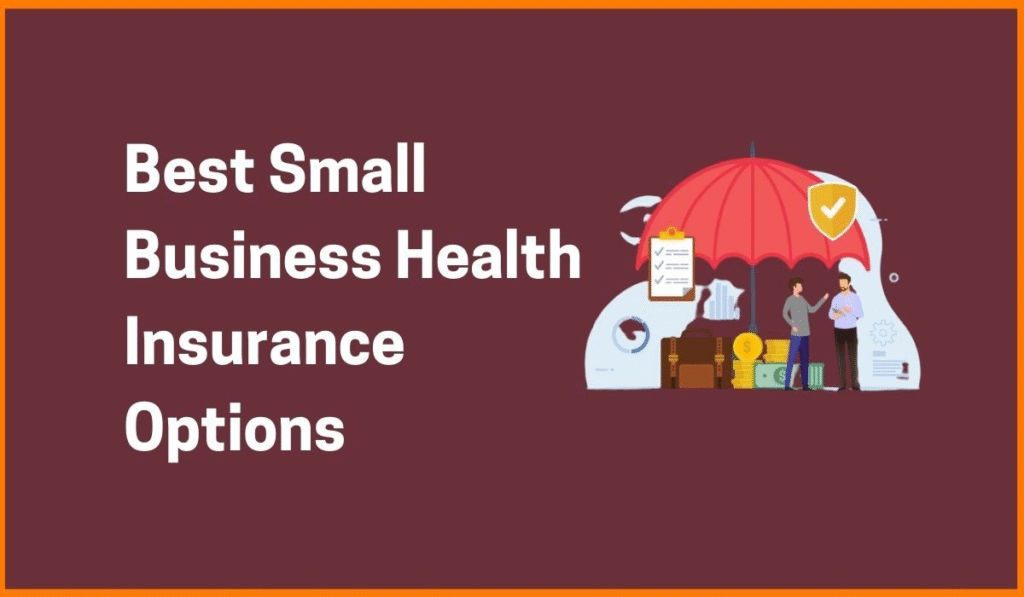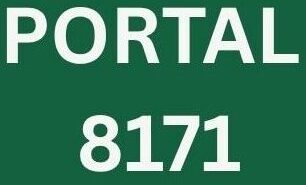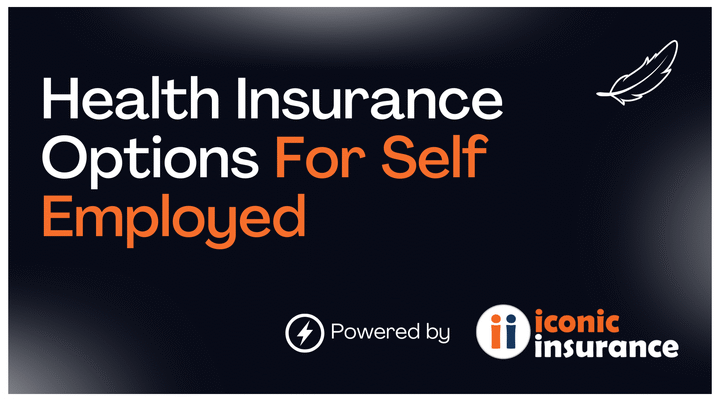Introduction
Employed Health Insurance Health Insurance for the Self-Employed Doesn’t Have to Be a Nightmare
If you’re one of the 57+ million self-employed Americans, you already wear many hats—CEO, marketing director, accountant, customer service rep. But when it comes to health insurance, things can get confusing fast. No HR department. No open enrollment reminders. Just you, your laptop, and a maze of deductibles and premiums.
But here’s the good news:
navigating self-employed health insurance in 2025 is easier than ever—if you know where to look. Whether you’re a full-time freelancer, a side hustler scaling your business, or a gig worker juggling multiple clients, this guide breaks down everything you need to choose the right plan, save money, and stay covered.
What Qualifies as Self-Employed in the USA?
Let’s start with the basics. You are considered self-employed if you meet any of the following:
- Run a business as a sole proprietor or independent contractor
- Own a small business without employees
- Work as a freelancer or gig worker (e.g., Uber driver, Etsy seller, content creator)
- Earn income from 1099 jobs instead of a W-2
Being self-employed means you’re on the hook for your own health coverage—but you also have access to tax breaks, ACA plans, and other tools employees don’t.
Why Self-Employed Health Insurance Is So Important in 2025
In 2025, medical costs in the U.S. continue to rise—the average ER visit costs over $2,200, and a simple hospital stay could run upwards of $10,000. Without health insurance, one accident or illness could cripple your finances.
But there’s another side to this. Health insurance:
- Gives peace of mind during emergencies
- Encourages preventive care and early detection
- Helps maintain income and business continuity
- Reduces taxable income (more on this later)
Understanding Your Options in 2025: Plans and Pathways
1. Marketplace Plans (Affordable Care Act / ACA)
This is the most common route for self-employed individuals.
✅ Key Benefits:
- No job or income requirement beyond being self-employed
- Guaranteed coverage with no exclusions for pre-existing conditions
- Subsidies and premium tax credits based on your income
💡 2025 Update: The Inflation Reduction Act extension means expanded subsidies are still available. Many freelancers earning under $60K/year qualify for low or even $0 monthly premiums.
🔍 Example:
Samantha, a freelance graphic designer in Austin, Texas, earns $48,000/year. Through the Marketplace, she gets a Silver plan for just $97/month after subsidies.
2. Private Insurance (Off-Exchange)
Off-exchange plans are sold directly by insurers and aren’t subsidized.

📌 Best for:
- Those who earn too much for subsidies
- People wanting more plan customization
- Individuals seeking broader provider networks
⚠️ Keep in mind: No tax credits, and often higher premiums.
3. Health Care Sharing Ministries (HCSMs)
These aren’t traditional insurance plans but cost-sharing communities.
📌 Best for:
- People of faith or those seeking alternatives to ACA
- Lower monthly costs (often under $200/month)
❗ Warning: HCSMs aren’t regulated like insurance. They can deny coverage and are not obligated to pay for your medical bills.
4. Short-Term Health Insurance
Designed for temporary gaps in coverage—like between jobs or during a startup launch.
⏳ Coverage lasts from 1 to 12 months, sometimes up to 36.
🚫 Not ideal for long-term coverage:
- Doesn’t cover pre-existing conditions
- Limited preventive care
- Can be denied for health history
5. COBRA (If You Recently Left a Job)
If you became self-employed after quitting a job with benefits, you may qualify for COBRA continuation coverage for 18–36 months.
📌 Drawback: Full premium cost falls on you, which can be steep.
How to Shop for Health Insurance as a Self-Employed Worker
Step 1: Estimate Your Income
Since Marketplace subsidies are based on your income, it’s important to project your Modified Adjusted Gross Income (MAGI).
👉 Tips:
- Use last year’s tax return as a baseline.
- Include 1099 earnings, freelance income, dividends, rental income, and any side gigs.
- Subtract business expenses to lower MAGI legally.
Step 2: Compare Plans on Healthcare.gov or State Exchanges
Use filters to sort by:
- Premium
- Deductible
- Out-of-pocket max
- Coverage for medications, specialists, mental health
Look for Silver or Gold plans if you expect to use your insurance regularly.
Step 3: Understand Key Terms
📘 Quick Glossary:
- Premium: Monthly cost
- Deductible: What you pay before coverage kicks in
- Copay: Flat fee per visit or prescription
- Coinsurance: Your share of costs after meeting deductible
- Out-of-pocket max: Cap on what you’ll pay in a year
Step 4: Check Provider Networks
Especially if you have preferred doctors or clinics, always confirm they’re in-network to avoid massive surprise bills.
Pro Tips: Lowering Self-Employed Health Insurance Costs
🧾 Deduct Your Premiums
Self-employed individuals can deduct 100% of their health insurance premiums from their taxable income—even if you don’t itemize.
💡 IRS Line 17, Schedule 1: That’s where your deduction goes!
💼 Open an HSA (Health Savings Account)
If you choose a high-deductible plan (HDHP), you can open an HSA to:
- Contribute pre-tax money
- Pay for medical expenses tax-free
- Invest and grow your savings
2025 HSA limits:
- $4,300 for individuals
- $8,600 for families
- $1,000 catch-up if over age 55
👨👩👧 Use Family Coverage Wisely
If your spouse is employed and has group insurance, you might be able to join their plan. Compare cost vs. ACA options before deciding.
Real-Life Stories: What Freelancers Are Doing in 2025
🎨 Kate, 32 – Freelance Illustrator
“I used to rely on short-term insurance, but I got sick and had to pay everything out of pocket. Now I’m on a Silver Marketplace plan. It’s $140/month after credits, and I sleep better knowing I’m covered.”
👨💻 Jamal, 41 – Web Developer & Small Biz Owner
“I make about $90K, so I don’t get subsidies. I found a high-deductible PPO for $380/month and opened an HSA. The tax benefits make it worth it.”
Top LSI Keywords to Include (Sprinkled Naturally)
- self-employed health insurance options
- how to get health insurance if you’re self-employed
- affordable health insurance for freelancers
- ACA plans for entrepreneurs
- tax deductions for self-employed insurance
- best insurance plans for gig workers
- private vs marketplace health insurance
Common Mistakes Self-Employed People Make (And How to Avoid Them)
❌ Overestimating Income
This can reduce your subsidy. If you estimate too high, you pay more upfront than you need to.
✔️ Tip: Adjust your estimate quarterly if needed.
❌ Missing Open Enrollment
Open Enrollment runs Nov 1 – Jan 15, but some states have longer windows. You may only qualify after that with a Special Enrollment Period (SEP) (e.g., divorce, birth, lost job).
❌ Ignoring Dental & Vision
Marketplace health plans don’t always include dental or vision. Look into standalone policies if you need them.
Expert Insight: What Insurance Advisors Are Saying in 2025
“Marketplace plans have become surprisingly affordable, especially with ongoing subsidies. But it’s crucial to reassess your needs every year. Your income, health, and plan offerings can change.”
— Laura Monroe, Certified Health Insurance Agent
“Many freelancers overlook HSAs. But they’re one of the few triple-tax-advantaged accounts left in the U.S.”
— Mark Ruiz, CPA & Small Business Tax Expert
Self-Employed Health Insurance in 2025: FAQ
🕵️ What is the best health insurance for freelancers?
Most freelancers benefit from ACA Marketplace plans due to subsidies. But high earners might prefer private plans or HSAs.
💰 Can I write off health insurance as a business expense?
Yes. Premiums are 100% deductible for the self-employed under IRS rules.
📅 When can I enroll in a plan?
- Open Enrollment: November 1 – January 15
- Special Enrollment: Triggered by life events (marriage, birth, etc.)
📍 What if I live in a state with its own exchange?
Use your state’s official site (e.g., Covered California, NY State of Health) instead of Healthcare.gov.
🚑 What if I only work part-time as self-employed?
You’re still eligible for ACA plans—even if you work part-time or have multiple gigs.
Final Thoughts: Empower Your Health and Your Business
Being your own boss comes with freedom—but also responsibility. And few decisions are more important than protecting your health. Luckily, 2025 offers more affordable and flexible options than ever before for the self-employed.
Don’t wait until you’re in the ER to think about coverage. Start exploring today, compare plans, and find one that fits your life, your income, and your business goals.

